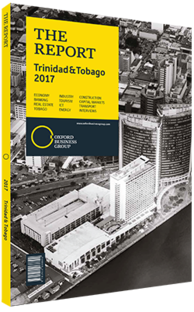Larger economic and market drivers are coming together
Ongoing fiscal imbalances within Trinidad & Tobago’s budget have necessitated further initiatives to address a widening deficit. New fiscal measures appear to present hurdles to corporate earnings growth. In addition, economic developments are set to test consumer and investor confidence. On a positive note, however, liquidity and other demand supply factors remain promising.
Slow Economic Activity
By the numbers, economic activity is on a downward trend. Central Bank of T&T data highlights a decline in real T&T GDP growth of 10.8% in FY 2016, following a 1.6% drop in FY 2015. Much of this decline stemmed from the fallout of energy prices and production. Consumer spending has followed suit, as evidenced by several barometers of activity. New auto sales in 2016 totalled 5301 units, a 20.5% drop compared to 2015. Domestic sales of cement also declined by 20.1% in 2016, to 524,279 tonnes. The latest available employment data suggests a contracting job market, with the unemployment ratio increasing to 4.4% in June 2016, from 3.2% in June 2015. This trend is likely to continue, as businesses may not require as large a workforce in a sluggish economic environment. The result will be a decline in aggregate spending power and headwinds to revenue generation.
Foreign Exchange
Away from consumption trends, the availability of foreign currency has had an influence on corporate earnings. First quarter 2017 sales of foreign currency to the public totalled $1.36bn. While this is marginally higher than $1.35bn in the first quarter of 2016, it is 12.8% below the five-year quarterly average of $1.56bn. Net official foreign reserves fell to $9.1bn in March 2017, 17% lower than $11bn in March 2015. Firms, particularly those dependent on US dollars for inventory acquisition, have cited the challenges of access to foreign exchange, and its impact on supplier relationships, inventory costs and operating margins. The pass-through cost increases to consumers could further dent consumer spending activity. All of this has affected corporate earnings across the market.
Fiscal Measures
New fiscal measures could also impact the earnings of listed T&T companies. Specifically, changes to the tax regime, whereby companies earning over TT$1m ($149,000) will be taxed at a marginal rate of 30%, could lead a decrease in earnings by companies on the composite index of around 4%. At the consumer level, the impact of previously announced value-added tax on a wider base of items, coupled with the pending introduction of property taxes, could place further pressure on spending power.
Silver Linings
While fiscal measures may be geared to lowering corporate earnings after tax, various factors remain positive. First, there is room to stimulate economic activity through a more accommodative monetary policy. Lending, in particular, could be accommodated by downward adjustment of the central bank’s benchmark repo rate, which has been kept at 4.75% for the past 12 months. A cut in the policy rate could broadly lower lending rates, potentially increasing consumer purchases of credit-essential, big-ticket items.
Second, excess financial system liquidity and a relative scarcity of quality assets mean that local equity markets should remain well supported. Stock liquidity may play a part in arresting the decline in prices of certain stocks, which trade less frequently due to their closely held nature. In such a case, the relative scarcity of stocks of this nature could provide some protection from purely valuation-driven price declines.
Third, companies with the capacity to do so could preserve the absolute dividends paid to and confidence of investors in an environment of lower earnings. Firms with healthy cash flows and low dividend pay-out ratios could return a higher percentage of their earnings to shareholders to maintain dollar dividends paid. In doing so, these companies could defend the dividend yield enjoyed by investors. Overall, the seemingly gloomy economic outlook and its impact on equity valuations may be offset by structural factors related to the local market, which may very well preserve portfolio values.
You have reached the limit of premium articles you can view for free.
Choose from the options below to purchase print or digital editions of our Reports. You can also purchase a website subscription giving you unlimited access to all of our Reports online for 12 months.
If you have already purchased this Report or have a website subscription, please login to continue.

